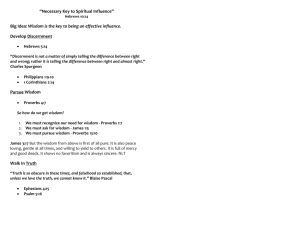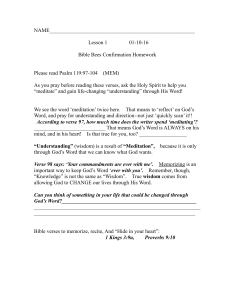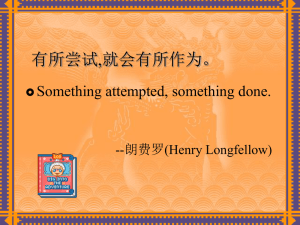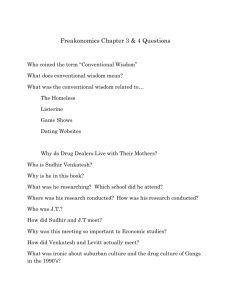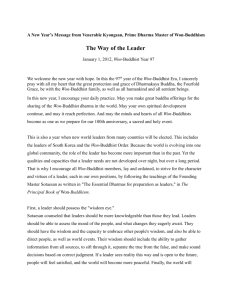Data, Information, Knowledge and Wisdom
advertisement
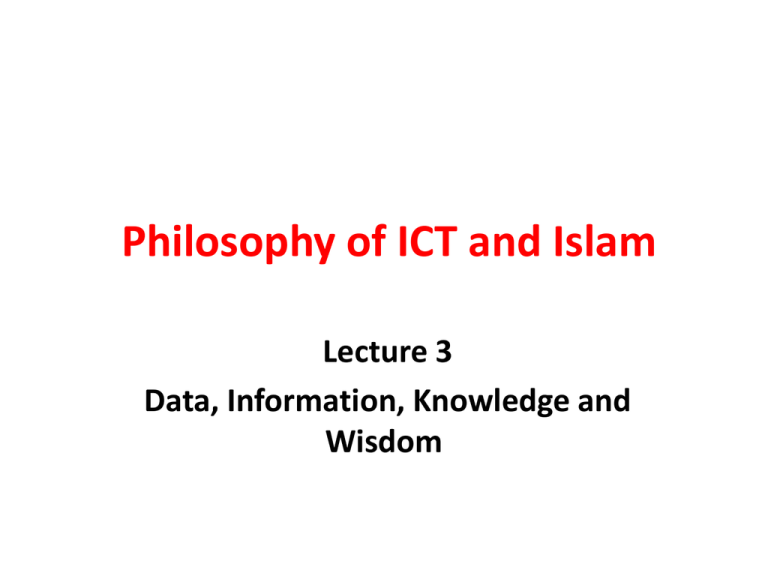
Philosophy of ICT and Islam Lecture 3 Data, Information, Knowledge and Wisdom Learning Outcome • Understand the hierarchy of knowledge and how data, information, knowledge and wisdom are related. • Being able to distinguish between data, information, knowledge and wisdom. Terminology • Data Simple raw facts that are isolated and not processed. The sources of data could include measurements, raw output from experiments, etc. • Information Relating individual raw facts and giving it meaning. • Knowledge Analysis and identification of information patterns. • Wisdom Using knowledge in decision making. Data, Information, Knowledge and Wisdom • It is important to make a distinction between data, information, knowledge and wisdom. • Certainly, they are related and dependent on each other. Data, Information, Knowledge and Wisdom (Cont.) • The hierarchy of knowledge, shown in Figure below is usually used to present the different levels of knowledge and how they are related. Data, Information, Knowledge and Wisdom (Cont.) • At the base of the hierarchy is data that represent simple raw facts. • The sources of data could include measurements, raw output from experiments, etc. • Such facts are isolated and not processed. • Data can be in the form of numbers, strings of text, symbols, pictures, etc. • An example of data is a bookstore database containing raw data records of books, author details, etc. Data, Information, Knowledge and Wisdom (Cont.) • When individual facts are structured, aggregated and put a meaningful context, information is produced • Establishing relations between individual facts and giving it some meaning results in information. • For example, a bookstore database query that returns all books published after 2008 produces information. • In computing, processing data gives information. Data, Information, Knowledge and Wisdom (Cont.) • The interpretation of information gives knowledge • Identifying patterns in information to make it useful produces knowledge. • For example, when the number of books published after 2008 are determined and presented year by year, based on query information, then knowledge is produced. • Thus, knowledge is derived from information by grasping its meaning. Data, Information, Knowledge and Wisdom (Cont.) • Finally applying knowledge and using it in decision making leads to wisdom. • Making a decision to order more books published in 2011 is wisdom Data, Information, Knowledge and Wisdom (Cont.) • An example to illustrate the above concepts, consider Ahmed’s grade in the ICT & Islamic Perspective course: • Data: Ahmed’s grade is A. • Raw fact. Data, Information, Knowledge and Wisdom (Cont.) • Information: Ahmed’s mark is more than 80%. • Putting meaning to the data. • Knowledge: Ahmed passed the ICT & Islamic Perspective course. • Analysis of information. • Wisdom: Ahmed will be appointed as a teaching assistant for this course next year. • Making a decision based on knowledge. Data, Information, Knowledge and Wisdom (Cont.) Ahmed will be appointed as a teaching assistant for this course next year. Ahmed passed the ICT & Islamic Perspective course. (Analysis of information). Ahmed’s mark is more than 80%. Putting meaning to the data. Ahmed’s grade is A. Raw fact. Summary • In this lesson, the following topics were discussed: • Data, Information, Knowledge and Wisdom.
